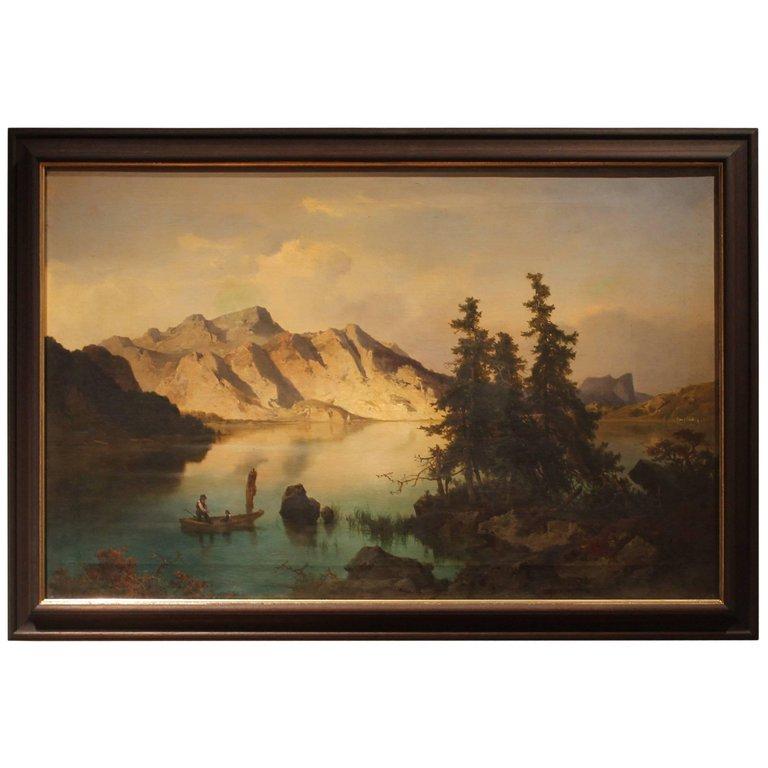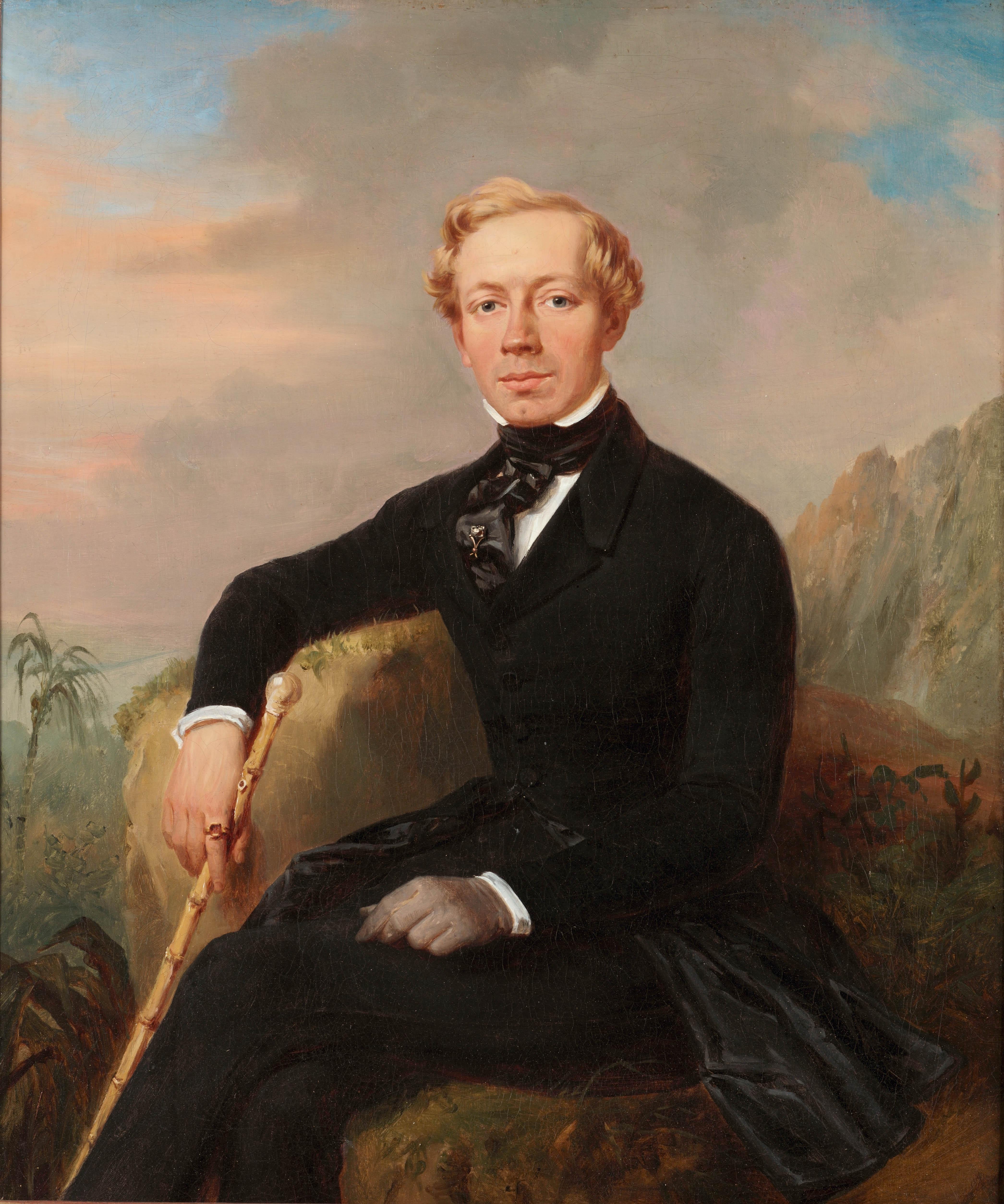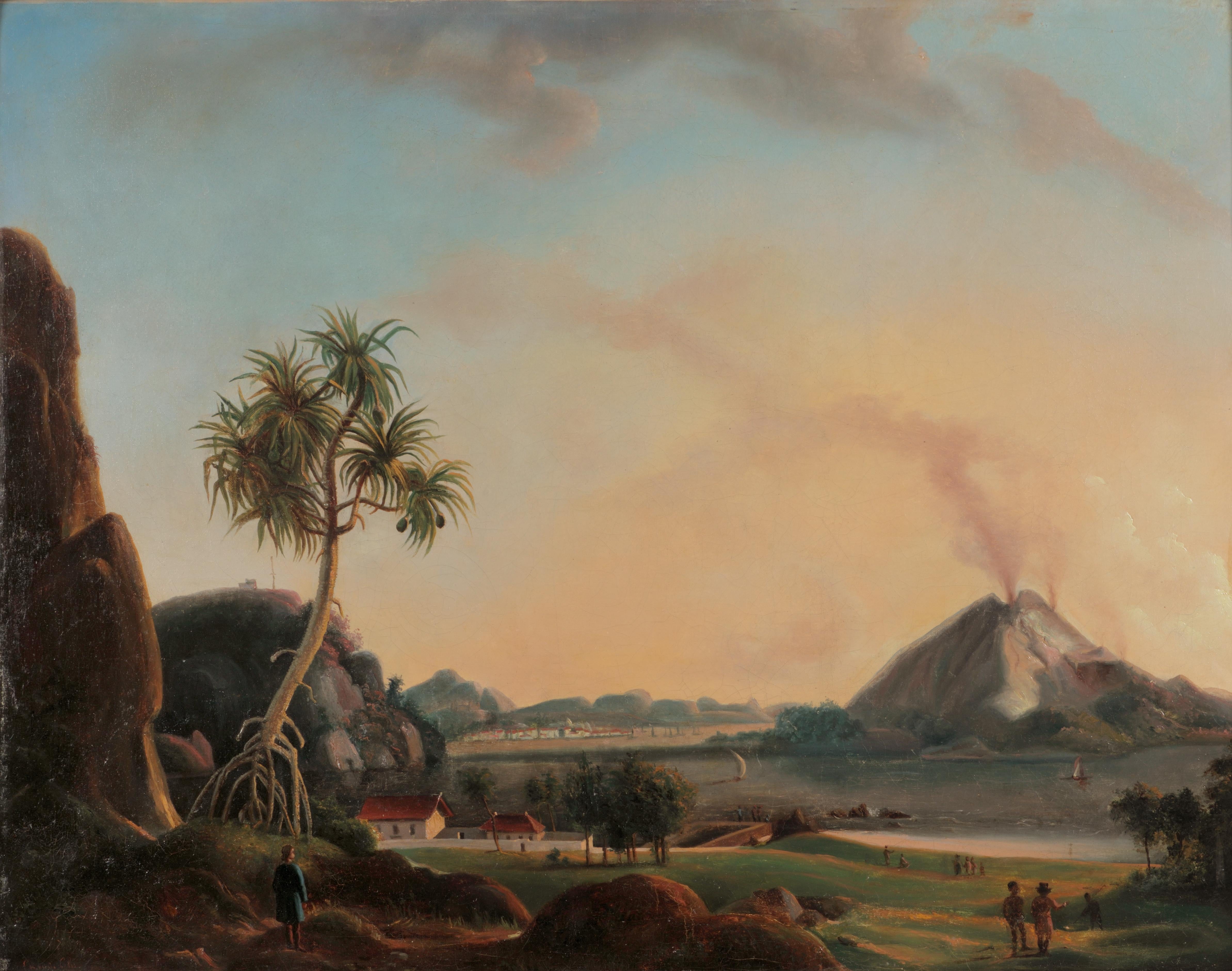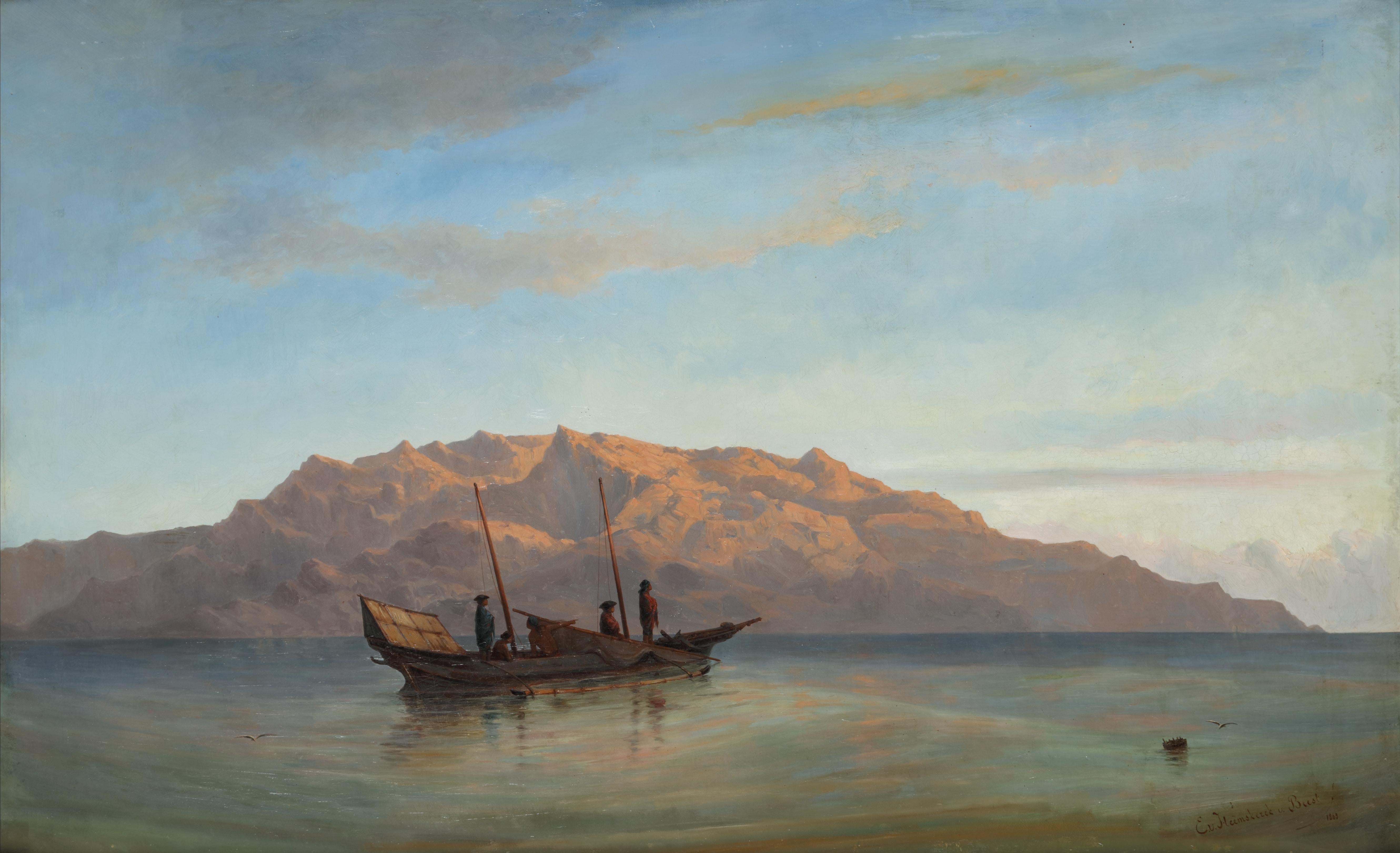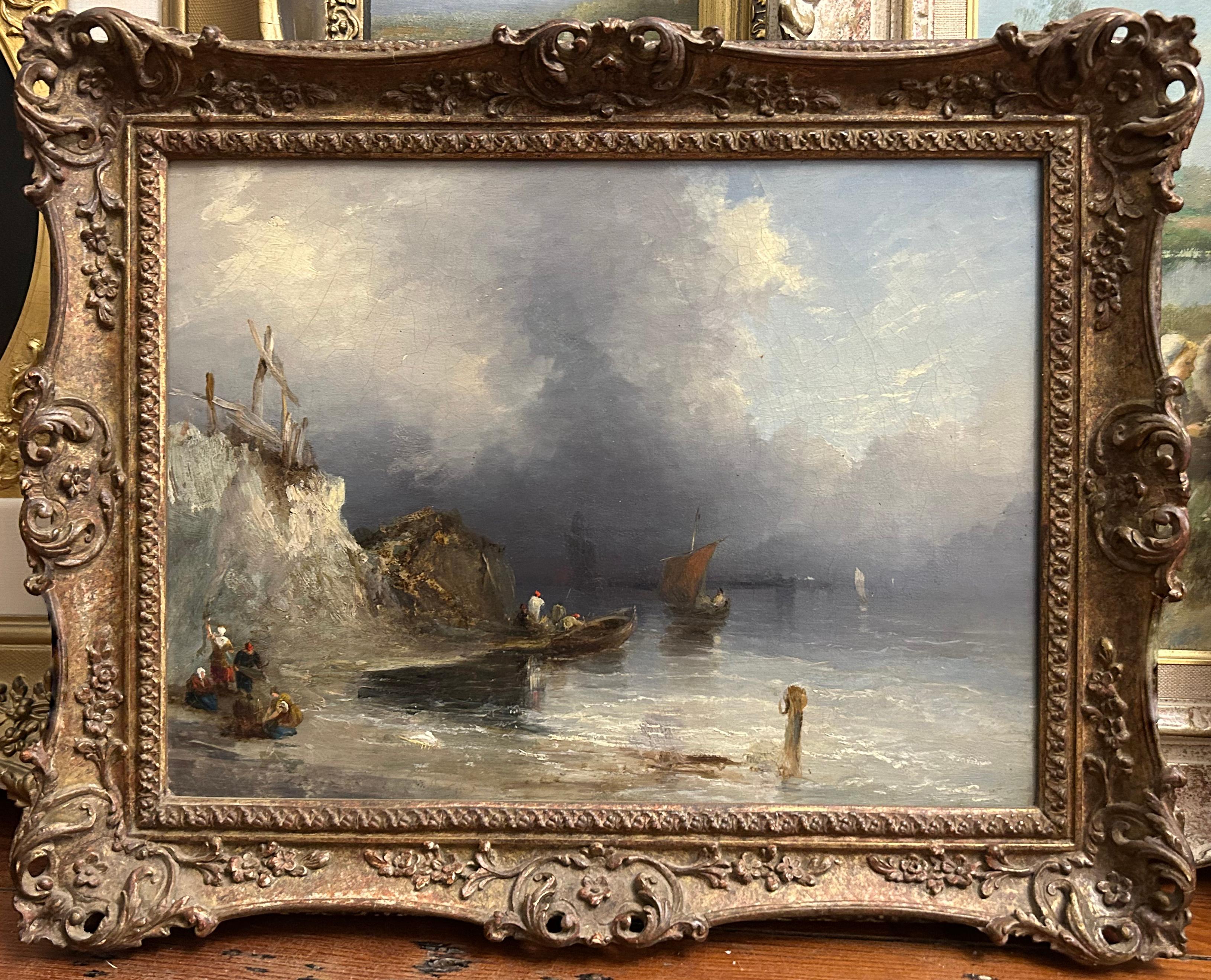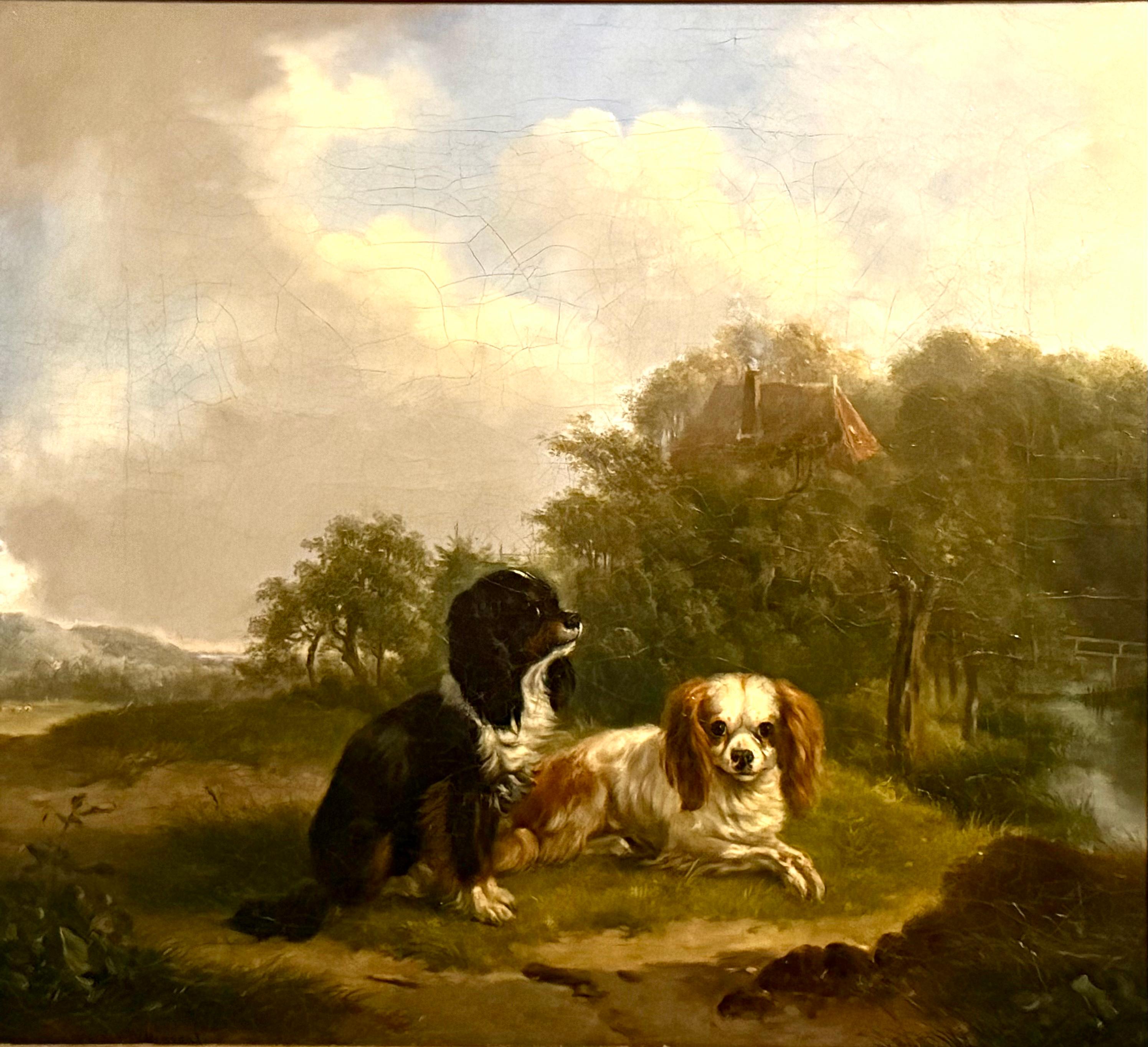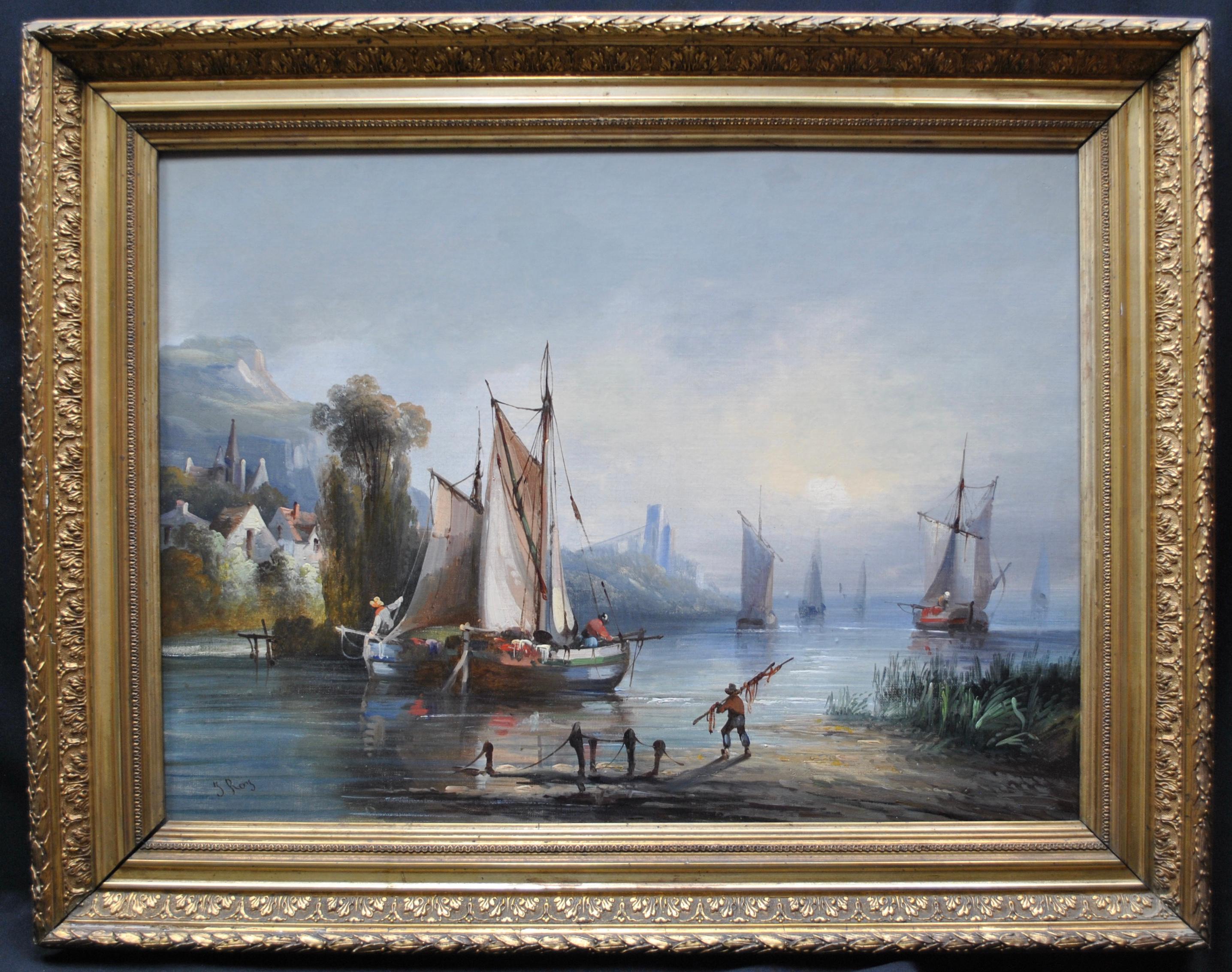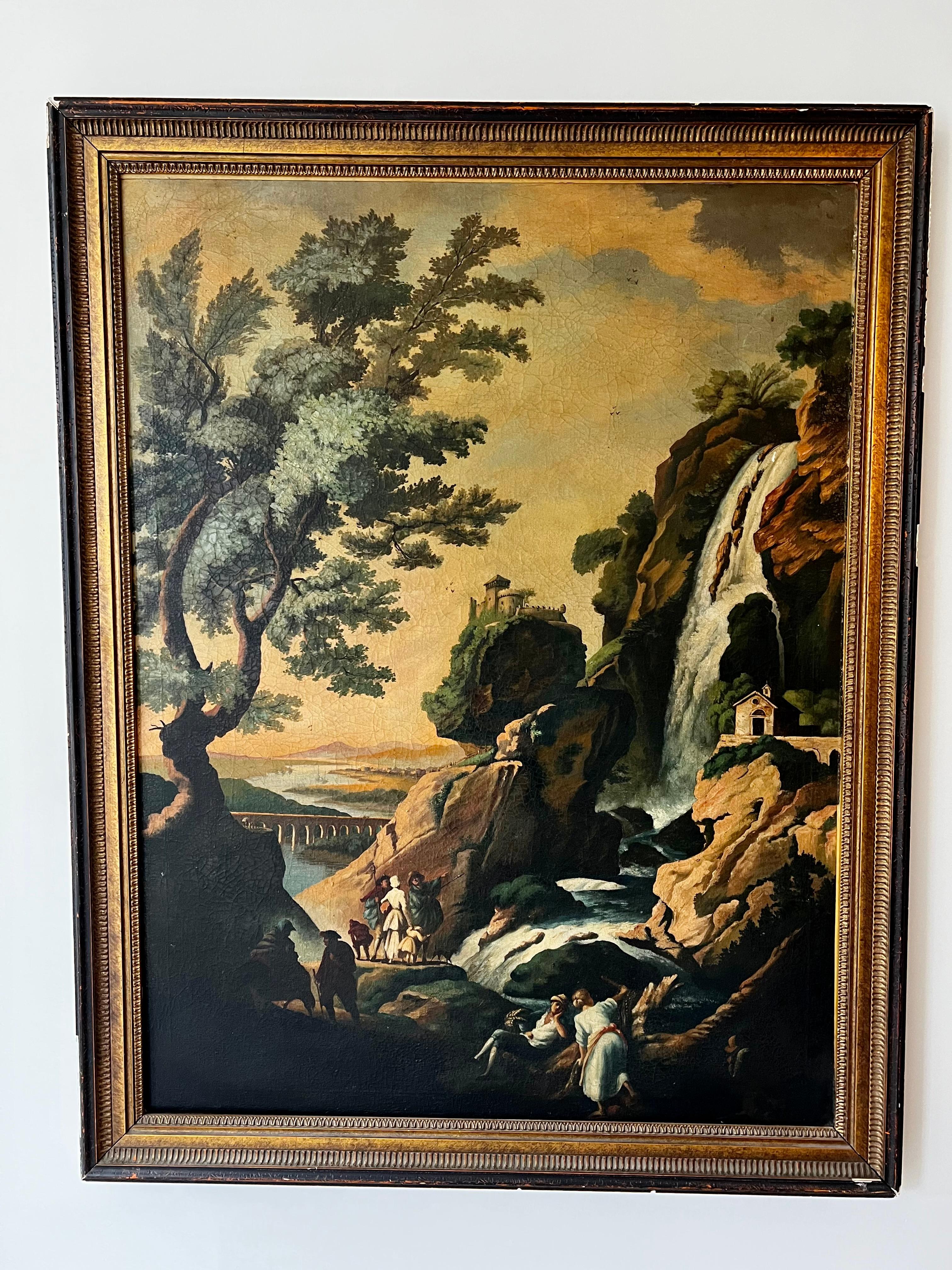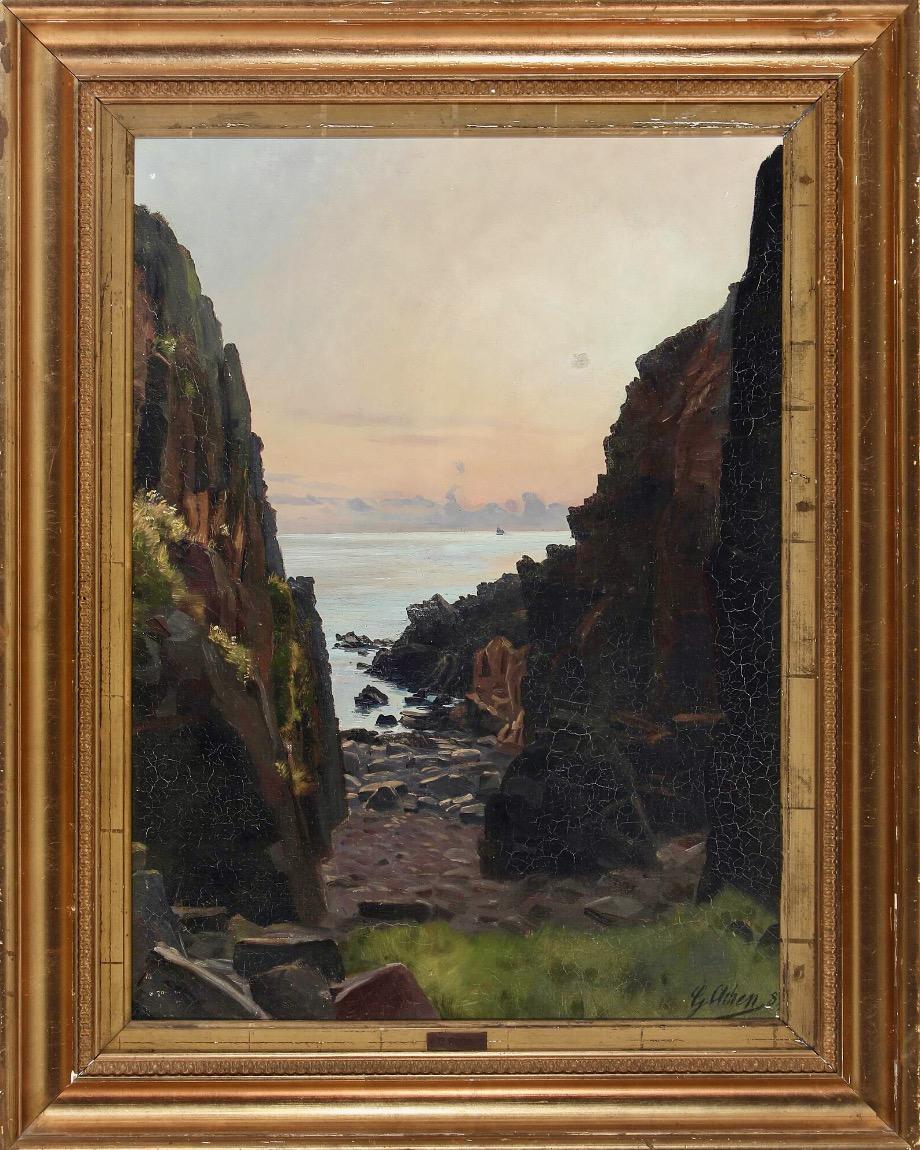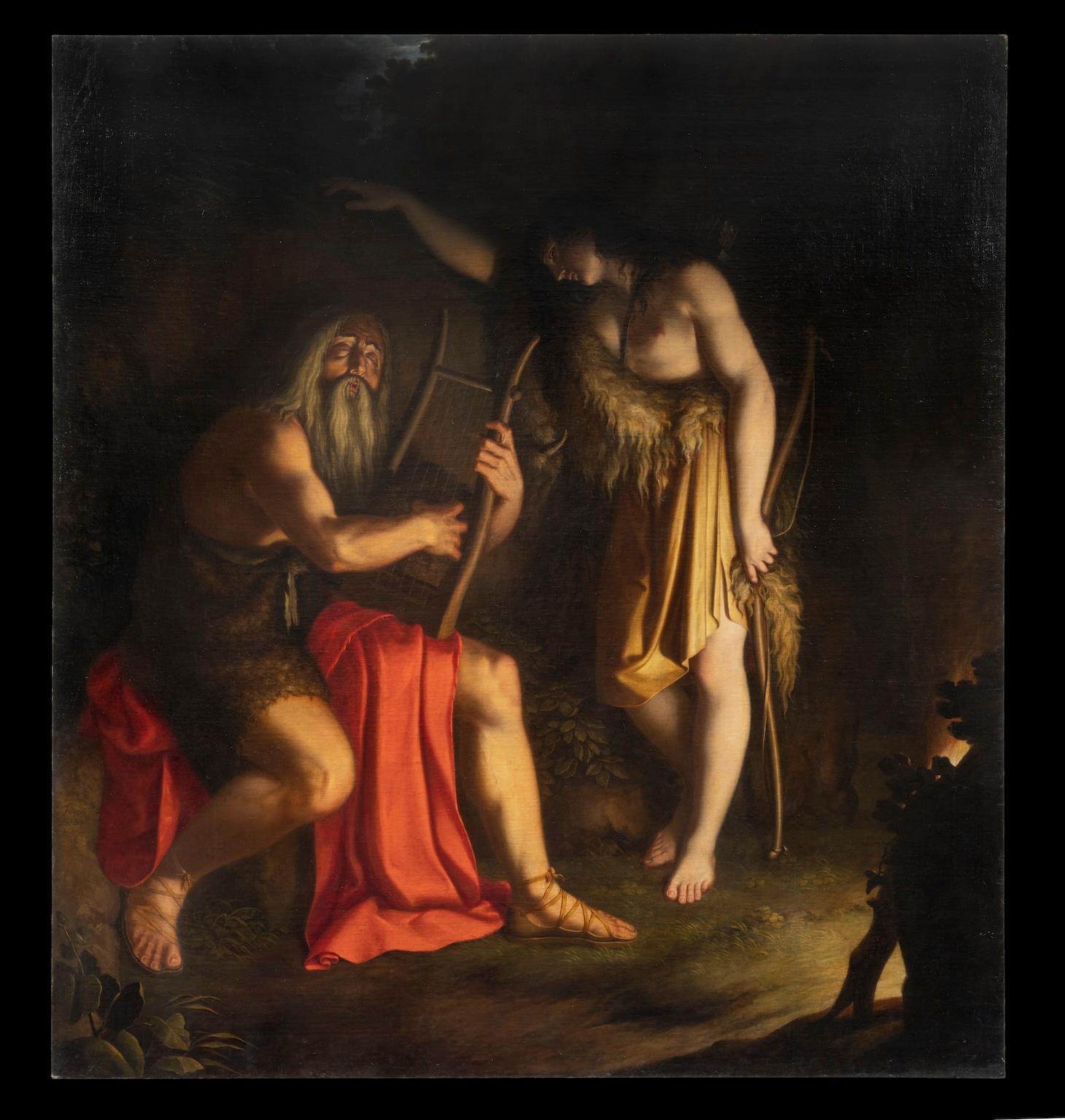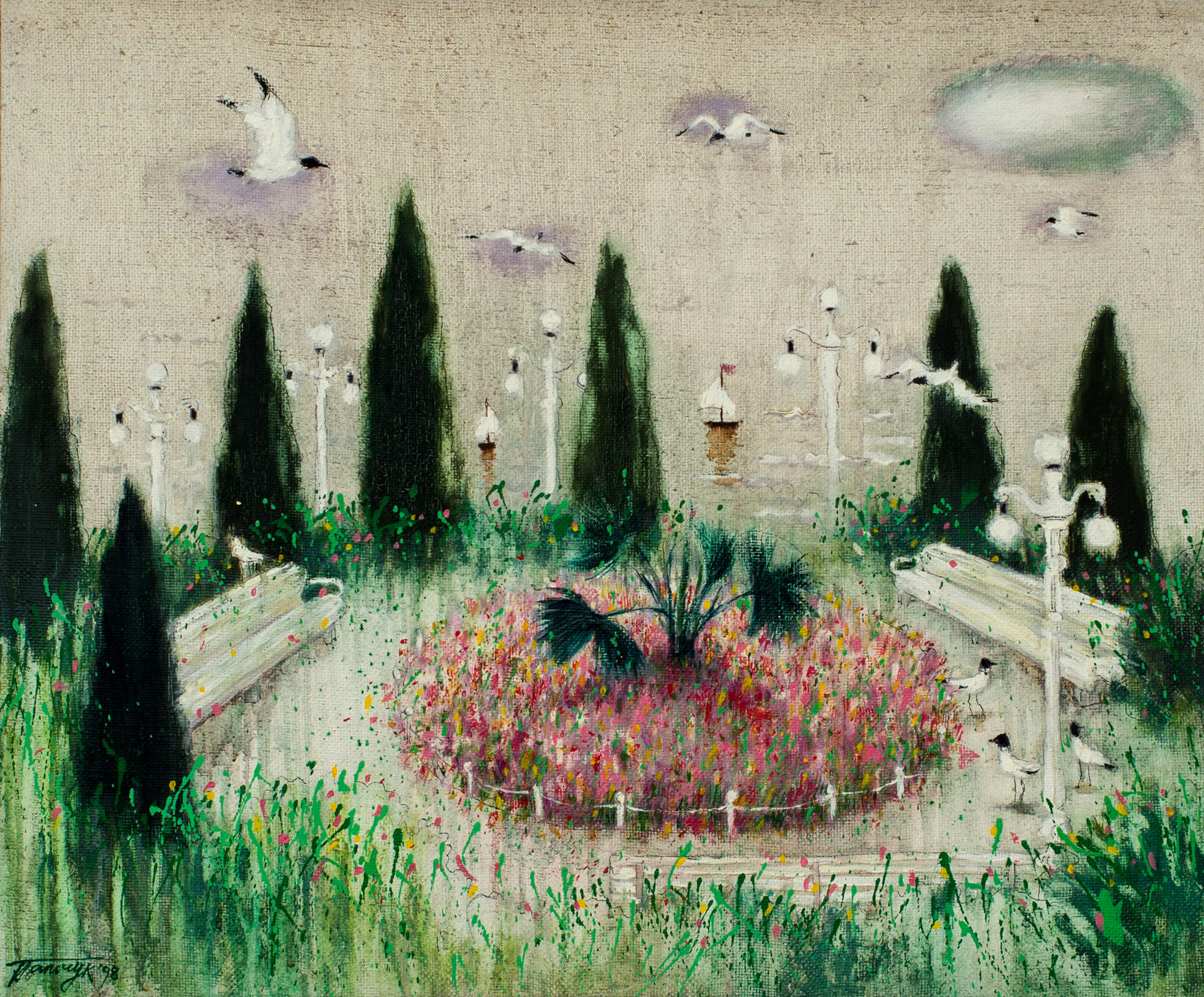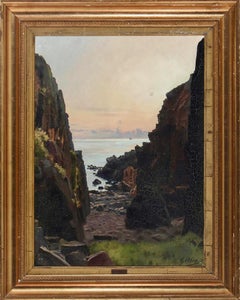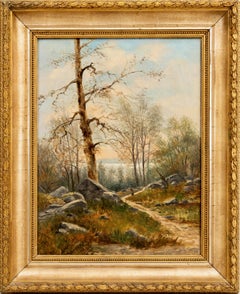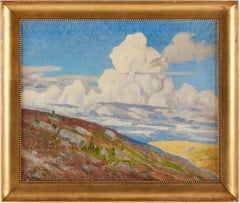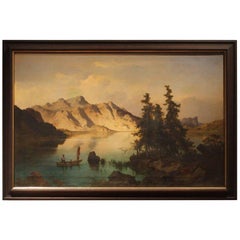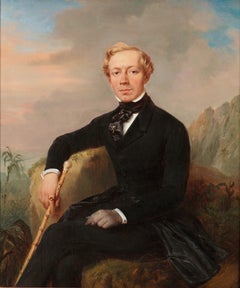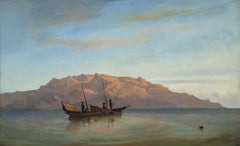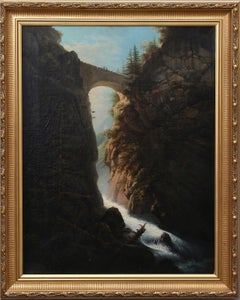
Mountain Landscape with a Stone Bridge over a Waterfall
Want more images or videos?
Request additional images or videos from the seller
1 of 10
RICHARD MAERZMountain Landscape with a Stone Bridge over a Waterfall1856
1856
Price:$2,601.58
$4,041.33List Price
About the Item
- Creator:RICHARD MAERZ (1810 - 1871, Austrian)
- Creation Year:1856
- Dimensions:Height: 39.57 in (100.5 cm)Width: 32.29 in (82 cm)Depth: 1.97 in (5 cm)
- Medium:
- Movement & Style:
- Period:
- Condition:The painting is in good condition with a couple of old restoration patches on the back of the canvas. See photo. A light cleaning of the surface is recommended. The gilded frame is later.
- Gallery Location:Stockholm, SE
- Reference Number:1stDibs: LU2608216329432
About the Seller
5.0
Platinum Seller
Premium sellers with a 4.7+ rating and 24-hour response times
1stDibs seller since 2023
25 sales on 1stDibs
Authenticity Guarantee
In the unlikely event there’s an issue with an item’s authenticity, contact us within 1 year for a full refund. DetailsMoney-Back Guarantee
If your item is not as described, is damaged in transit, or does not arrive, contact us within 7 days for a full refund. Details24-Hour Cancellation
You have a 24-hour grace period in which to reconsider your purchase, with no questions asked.Vetted Professional Sellers
Our world-class sellers must adhere to strict standards for service and quality, maintaining the integrity of our listings.Price-Match Guarantee
If you find that a seller listed the same item for a lower price elsewhere, we’ll match it.Trusted Global Delivery
Our best-in-class carrier network provides specialized shipping options worldwide, including custom delivery.More From This Seller
View AllSunset at Kullen
Located in Stockholm, SE
Sunset at Kullen near Mölle in the very south of Sweden.
Between two steep cliffs, a narrow stony beach unfolds, offering a tranquil vantage point over a still sea toward Denmark. T...
Category
1880s Romantic Landscape Paintings
Materials
Canvas, Oil
Fall Landscape with Lake and Woman Walking on a Forest Path - 19th Century Oil
Located in Stockholm, SE
Autumn landscape attributed to Arvid Mauritz Lindström (1849-1923)
On a path winding between trees and stones beside a lake, a woman is walking. The work is painted in a relatively f...
Category
Late 19th Century Naturalistic Landscape Paintings
Materials
Canvas, Oil
Italian Capriccio with Ruins Venice - 18th Century Oil on Canvas
By Gaetano Vetturali (Lucca, 1701-1783)
Located in Stockholm, SE
A Venetian capriccio view with classical architectural ruins and in the background the church of San Giorgio Maggiore and the Church of Santa Maria della Salute next to the Grand Can...
Category
1770s Old Masters Landscape Paintings
Materials
Canvas, Oil
After the Storm - Oil on Canvas 1910´s
Located in Stockholm, SE
"After the Storm" is the title of this oil painting on canvas by the Swedish artist Hjalmar Berghcrantz (1889–1961). Signed and dated 1917. The artwork depicts a rugged landscape whe...
Category
1910s Naturalistic Landscape Paintings
Materials
Canvas, Oil
$1,378 Sale Price
20% Off
Free Shipping
Summer Landscape with Lake, Oil on Canvas, 1890´s
Located in Stockholm, SE
Large summer landscape by the Swedish artist Alfred Thörne (1850–1916). A footpath leads toward sunlit meadows and trees along the edge of the canal/lake; in the distance a farmstead...
Category
1890s Land Landscape Paintings
Materials
Oil, Canvas
Twilight in the Forest Meadow with Mountains
Located in Stockholm, SE
An expansive twilight landscape unfolds before you: a dark spruce forest opens into a quiet forest meadow, the silence punctuated only by the fading light. In the distance, the Bavar...
Category
1920s Other Art Style Landscape Paintings
Materials
Canvas, Oil
You May Also Like
J. Brunner 1869 Oil on Canvas Austrian Landscape with Lake and Mountain Painting
Located in Firenze, IT
This very fine quality 19th century oil on canvas in dark brown wood frame with gold leaves details throughout is signed by Joseph Brunner (Vienna 1826-...
Category
19th Century Romantic Landscape Paintings
Materials
Canvas, Wood, Oil
Self-portrait in Indonesian Landscape
Located in Amsterdam, NL
Abraham Johannes Romswinckel (1810-1856)
Self-portrait in Indonesian landscape
Inscribed Abr. Joh. Romswinckel, geb. Batavia 17 Oct. 1810, overl...
Category
1820s Romantic Portrait Paintings
Materials
Canvas, Oil
A pair of Indonesian Landscapes, by Charles Legrain (19th century)
Located in Amsterdam, NL
Charles Legrain, (19th century)
Two Javanese landscapes
Both signed Legrain Ch. and one dated 1857
Both oil on canvas, size: 95 x 114 cm
In rich gilt-gesso frame.
(2x).
Category
Mid-19th Century Romantic Landscape Paintings
Materials
Canvas, Oil
Evening prayers by fishermen under the high coast of Celebes
Located in Amsterdam, NL
Jacob Eduard Van Heemskerck Van Beest (1828-1894)
“Avondgebed; Maleidische tripang visschers onder de hoge kust van Celebes” (Ev...
Category
19th Century Romantic Landscape Paintings
Materials
Canvas, Oil
Early 1800s Scottish seascape after JMW Turner by two Nasmyth sisters
Located in Hillsborough, NC
Atmospheric and dramatic seascape painted by two sisters from the famed Nasmyth family of 18th/19th century Scottish artists. The names of A G Nasmyth (Anne Gibson) and Jane Nasmyth ...
Category
Early 19th Century Romantic Landscape Paintings
Materials
Oil, Canvas
Two Spaniels in Landscape 19th C Dutch
Located in Hillsborough, NC
King Charles Spaniels dated 1820s to 1850s, is a charming and delightful oil painting on canvas by Dutch artist known for animal paintings and landscapes, Abraham Hendrick Winter (18...
Category
Mid-19th Century Romantic Animal Paintings
Materials
Canvas, Oil
Recently Viewed
View AllMore Ways To Browse
Antique Bridges
Antique Waterfall
Landscape Stone Bridge Oil Canvas
Caspar David Friedrich
Carl Spitzweg
Watch 1942
Brave Fine Art
Jean Renoir
John Stanford
Scottish Sheep
Wheat Field Painting
16th Century Still Life
Alfred Martin
American Clipper Ship
Antique Nottingham
Birch Trees Forest Painting
Clifford Brown
Coastal Bird Paintings
